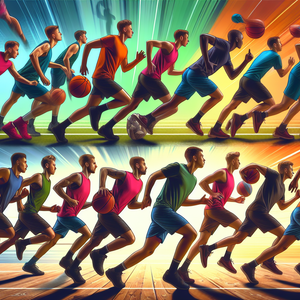The Future Chefbot Revolution

The emergence of chefbots is a testament to the rapid pace of technological innovation. Companies such as Moley Robotics and Karakuri have developed advanced kitchen robots that can prepare complex meals with remarkable accuracy. Moley Robotics, for example, unveiled its robotic kitchen in 2020, which can replicate recipes by mimicking the precise movements of professional chefs. This system can chop, sauté, and plate dishes with a level of consistency that even experienced human chefs might struggle to achieve. Remarkably, these robots are also capable of cleaning up after themselves, addressing one of the most time-consuming aspects of cooking. The appeal of chefbots lies in their ability to optimize efficiency and maintain high-quality standards. In professional kitchens, where speed and consistency are critical, these robots can reduce errors and streamline workflows. For home cooks, chefbots promise the convenience of gourmet-quality meals with minimal effort. Imagine coming home after a long day to find a restaurant-grade meal prepared by a robotic assistant, ready to be served. This vision of effortless cooking is driving significant investment in the development of chefbots, signaling that their widespread adoption may not be far off.
Enhancing Creativity or Stifling Artistry?
One of the most contentious issues surrounding chefbots is their impact on culinary creativity. Advocates argue that automation can liberate chefs from repetitive tasks, enabling them to focus on innovation and artistic expression. By delegating time-consuming processes such as chopping, stirring, and temperature monitoring to robots, chefs can experiment with new ingredients, techniques, and presentation styles. In this sense, chefbots could become valuable collaborators, functioning as high-tech sous chefs that enhance human creativity. However, critics are skeptical of this optimistic vision. They contend that chefbots, while efficient, lack the intuition, spontaneity, and emotional depth that define human cooking. A seasoned chef’s ability to adapt a recipe based on taste, smell, or a diner’s preferences is a deeply personal and creative process that cannot be replicated by an algorithm. Moreover, cooking is often an expression of cultural heritage and personal experience. For instance, a grandmother’s secret recipe for pasta sauce carries a sense of tradition and memory that no robot could reproduce. This raises the concern that over-reliance on chefbots could lead to a homogenized culinary landscape, stripping away the soul of cooking and reducing it to a mechanical process.
The Consumer Perspective
From a consumer standpoint, the advent of chefbots presents both opportunities and challenges. On the one hand, robot chefs have the potential to redefine dining standards by delivering perfectly cooked meals with unparalleled consistency. Imagine ordering a steak at a restaurant, knowing that it will be cooked to your exact specifications every single time. Additionally, by reducing labor costs, chefbots could make high-quality cuisine more affordable, democratizing access to gourmet dining experiences. On the other hand, many consumers value the human element of dining, which goes beyond the food itself. The artistry of a chef’s touch, the interaction with kitchen staff, and the sense of connection to a culinary tradition all contribute to the overall experience of eating out. For some, knowing that a dish was prepared by a robot might diminish its authenticity or emotional resonance. Will consumers embrace chefbots as a novelty, or will they resist the idea of machines taking over a domain so closely tied to human culture and creativity? The answer may depend on how seamlessly chefbots can integrate into the dining experience without compromising its intangible qualities.
Culinary Jobs in Jeopardy
One of the most significant concerns surrounding chefbots is their potential impact on employment in the culinary industry. According to a 2019 report by the Brookings Institution, food preparation jobs are among the most at-risk professions for automation. Line cooks, prep chefs, and other kitchen staff perform repetitive tasks that can be easily replicated by robots, making them particularly vulnerable to displacement. The implications of job displacement extend beyond individual workers to the broader culinary ecosystem. For many chefs, the journey to culinary mastery begins with entry-level roles, where they learn the fundamentals of cooking and develop their skills over time. If chefbots dominate kitchens, this traditional career pathway could disappear, potentially stifling the emergence of future culinary talent. Moreover, restaurants are more than just places to eat—they are cultural hubs that foster creativity, community, and human connection. The loss of culinary jobs could have far-reaching social and cultural consequences that go beyond the immediate economic impact. While automation may create new roles in fields such as robotics programming and maintenance, these positions often require specialized skills that displaced workers may not possess. This highlights the importance of investing in retraining programs to help workers transition to new opportunities in an increasingly automated world.
Striking a Balance
As the chefbot revolution unfolds, the challenge lies in finding a balance between embracing technological innovation and preserving the essential human elements of cooking. Rather than replacing human chefs entirely, chefbots could serve as tools to enhance productivity and reduce waste, while leaving the creative and emotional aspects of cooking to people. For instance, a hybrid model could combine the precision and efficiency of robots with the artistry and intuition of chefs, creating a synergy that benefits both professionals and consumers. Policymakers, industry leaders, and consumers must collaborate to address the ethical and societal implications of chefbots. Regulations will be needed to ensure that automation does not exacerbate inequality or undermine food quality. At the same time, fostering dialogue between technologists and culinary professionals can help shape the development of chefbots in ways that respect the cultural significance of cooking. By taking a thoughtful and inclusive approach, we can harness the potential of chefbots while mitigating their risks.
The rise of chefbots represents a transformative moment in the culinary world, offering exciting possibilities for efficiency, accessibility, and innovation. However, this technological revolution also raises profound questions about creativity, authenticity, and the future of culinary jobs. As we stand on the cusp of this new era, it is crucial to strike a balance that preserves the artistry and cultural importance of cooking, while embracing the benefits of automation. The chefbot revolution is not just about robots cooking meals—it’s about redefining our relationship with food, technology, and the human experience. Whether chefbots become partners in the kitchen or disruptors of tradition, one thing is clear: the future of food is being shaped by the interplay of human ingenuity and machine intelligence, and the possibilities are as tantalizing as a perfectly prepared dish.
Robotics Chef Programmer
Moley Robotics, Karakuri, or startup companies at the intersection of food and AI
Core Responsibilities
Develop and optimize algorithms for robotic chefs to mimic human cooking techniques (e.g., chopping, sautéing, plating).
Collaborate with culinary professionals to translate recipes into executable robotic commands.
Troubleshoot and refine robotic performance to ensure consistent food quality and safety standards.
Required Skills
Expertise in robotics software (e.g., ROS, Python) and machine learning.
Knowledge of food safety regulations and culinary processes.
Experience working with motion capture technology or kitchen automation systems.
Food Technologist - AI Integration Specialist
Large food manufacturers (e.g., Nestlé, Unilever) or companies developing smart kitchen appliances
Core Responsibilities
Design and test AI-powered devices for food preparation, quality control, and inventory management.
Analyze consumer and chef feedback to improve AI-driven culinary tools.
Collaborate with engineers and data scientists to incorporate sensory data (e.g., flavor profiles, textures) into AI systems.
Required Skills
Background in food science, AI, or sensory analysis.
Strong understanding of machine learning applications for food texture, consistency, and flavor optimization.
Proficiency in data analysis and predictive modeling.
Culinary Automation Consultant
Consulting firms specializing in food service innovation or restaurant chains adopting automation
Core Responsibilities
Advise restaurants and food businesses on integrating robotic and AI technologies into their kitchens.
Conduct cost-benefit analyses to determine the ROI of automation systems.
Train kitchen staff to work alongside automated tools, emphasizing hybrid workflows.
Required Skills
Comprehensive knowledge of both culinary operations and automation technologies.
Strong project management skills and the ability to communicate technical concepts to non-technical stakeholders.
Familiarity with regulatory and safety standards for commercial kitchens.
Human-Robot Interaction (HRI) Designer for Culinary Applications
Companies like Samsung SmartThings, Moley Robotics, or research labs focusing on HRI
Core Responsibilities
Design intuitive interfaces for chefs and home cooks to interact with kitchen robots.
Develop user-friendly programming tools that allow customization of recipes and cooking processes.
Conduct usability testing to ensure seamless collaboration between humans and robotic systems in high-pressure environments.
Required Skills
Proficiency in UX/UI design and human-centered design principles.
Understanding of cognitive load and ergonomics in culinary environments.
Experience with IoT platforms and voice-command integration (e.g., Alexa, Google Assistant).
Culinary Data Scientist
Food tech startups, AI-focused companies in the culinary space, or research institutions studying food systems
Core Responsibilities
Analyze vast datasets from robotic kitchens to identify patterns in cooking efficiency, ingredient usage, and recipe success rates.
Develop predictive models to optimize meal preparation and reduce food waste in automated systems.
Collaborate with chefs to create data-driven recipes tailored to consumer preferences and dietary needs.
Required Skills
Strong background in data science, including Python, R, and SQL.
Knowledge of culinary principles and food science, enabling meaningful analysis of cooking data.
Experience with big data tools (e.g., Hadoop, Spark) and AI technologies.


